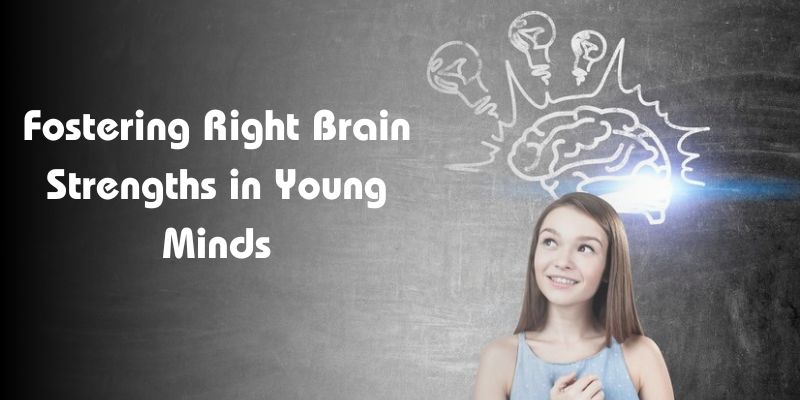Fostering Right Brain Strengths in Young Minds

Introduction
In the modern educational landscape, there is increasing recognition of the importance of nurturing both sides of the brain for holistic development. While the left brain is associated with logic, analysis, and rational thinking, the right brain is often linked to creativity, intuition, and imagination. Fostering right brain strengths in young minds is crucial for unlocking their full potential and preparing them for success in an ever-evolving world. In this article, Right brain training explores the strategies and approaches to cultivate and harness the power of the right brain in children.
Understanding Right Brain Functions
The right hemisphere of the brain is responsible for processing information in a holistic and intuitive manner. It is the seat of creativity, innovation, emotional intelligence, and artistic expression. By understanding the unique functions of the right brain, educators and parents can appreciate its significance in shaping children’s cognitive and emotional development.
Encouraging Creative Expression
One of the most effective ways to foster right brain strengths in young minds is by encouraging creative expression. This can take many forms, including art, music, storytelling, drama, and imaginative play. Providing children with opportunities to explore their creativity not only enhances their artistic abilities but also stimulates their imagination and problem-solving skills. Through creative expression, children learn to think outside the box, adapt to new situations, and express themselves authentically.
Embracing Curiosity and Exploration
Incorporating principles of right brain education further enhances the cultivation of curiosity in young learners. Right brain education emphasizes holistic learning through activities that engage intuition, creativity, and imagination. By integrating elements such as art, music, and visual stimuli into educational experiences, educators and parents stimulate right brain development while nurturing curiosity and fostering a deeper appreciation for learning and creativity in children.
Integrating Arts and STEAM Education
Integrating arts education with science, technology, engineering, and mathematics (STEM) curriculum is a powerful way to foster right brain strengths in young minds. STEAM education combines analytical thinking with creative problem-solving, providing a holistic approach to learning that nurtures both sides of the brain. Through hands-on projects, collaborative activities, and interdisciplinary learning experiences, students develop the skills and mindset needed to thrive in the 21st century.
Cultivating Emotional Intelligence
Emotional intelligence, a cornerstone of right brain development, can be further nurtured through concentration activities for students. Engaging in mindfulness exercises, such as deep breathing and guided meditation, cultivates focus and self-awareness. Role-playing scenarios that require sustained attention and problem-solving enhance concentration skills while fostering empathy and communication. These activities empower students to regulate their emotions and navigate social interactions with confidence and resilience.
Celebrating Individuality and Divergent Thinking
Every child is unique, with their own strengths, interests, and ways of thinking. Celebrating individuality and encouraging divergent thinking promotes right brain development by fostering creativity and innovation. Creating a supportive environment where children feel valued, respected, and free to express themselves encourages them to embrace their differences and explore their full potential. By honoring diversity and encouraging independent thought, educators and parents empower young minds to think creatively and boldly pursue their passions.
Fostering right brain strengths in young minds is essential for nurturing creativity, innovation, and emotional intelligence. By understanding the functions of the right brain and embracing strategies such as encouraging creative expression, embracing curiosity and exploration, integrating arts and STEAM education, cultivating emotional intelligence, and celebrating individuality and divergent thinking, educators and parents can unlock the full potential of children and prepare them for success in an increasingly complex and dynamic world.